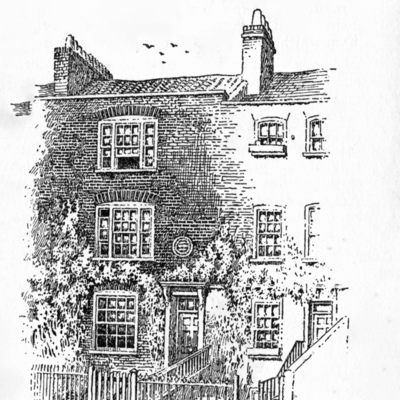Erection date: 26/6/1935
This foundation stone of the first building of the New Westminster Hospital was laid by His Royal Highness Edward Prince of Wales KG on the twenty-sixth day of June in the year 1935.
The foundation stone of the Westminster Hospital for its move from Broad Sanctuary to the first of its buildings east and west of St John's Square. The hospital moved out in 1992 but the buildings remain, though now converted to luxury accommodation.
Site: St John the Evangelist burial ground (2 memorials)
SW1, Horseferry Road, St John the Evangelist garden
The garden's modern information board reads: This garden was acquired by the church of St John the Evangelist, Smith Square, for the use as a cemetery and was consecrated by Dr Wilcocks, Dean of Westminster, on 29 July 1731. the burial ground was overcrowded within 20 years and three feet of earth was deposited over the whole area as a solution to problem {sic}. Overcrowding continued to cause difficulties, and fees were raised several times in attempts to prevent "low fees attracting interments from other parishes". One report said that 5,126 graves had been dug in ten years. The burial ground was not protected by a wall until 1784, but two watchmen were appointed for night duty in 1781, when the stealing of bodies for dissection was common. In 1814, after a time without watchmen, they again were needed, and were armed with pistols.
In 1823 Lord Grosvenor sold adjoining land to the parish, and this was consecrated as a burial ground on 23 June that year. Lord Palmerston closed the burial ground in October 1853, claiming it had become a great public nuisance. After closure it was neglected until 1880 when a committee of inhabitants was appointed to convert it into a public garden. A strip of the ground was given for the widening of Horseferry Road. The garden was opened on 23 May 1885 by the Duke of Westminster, and in 1887 the MP for Marylebone, Sir Frederick Seager Hunt, paid for a shelter to be built in the centre. The layout of the garden remains the same today.
Except, clearly, the shelter has now been replaced with a fountain, and this plaque, recovered from the shelter or elsewhere, has been reclaimed and laid into the slabs around the fountain.
Both plaques are laid into the paving around the fountain.











Comments are provided by Facebook, please ensure you are signed in here to see them